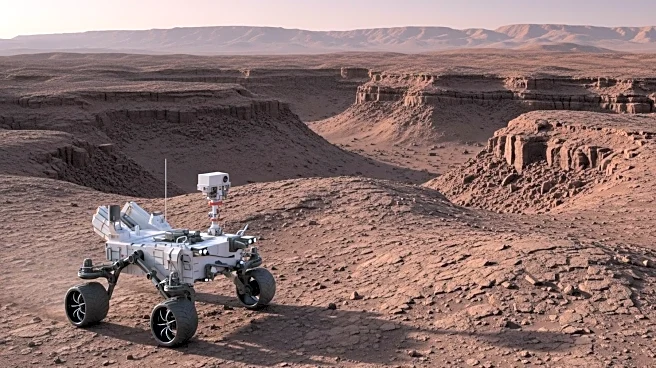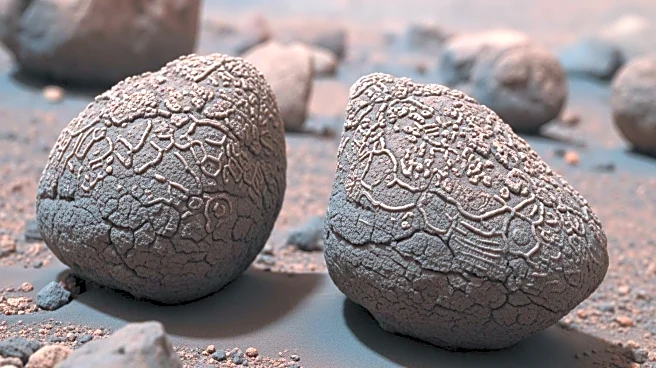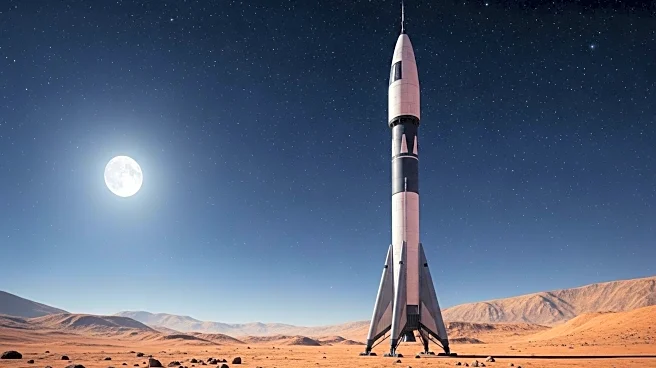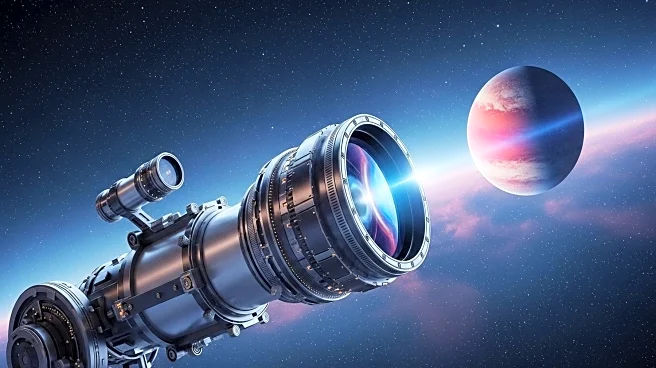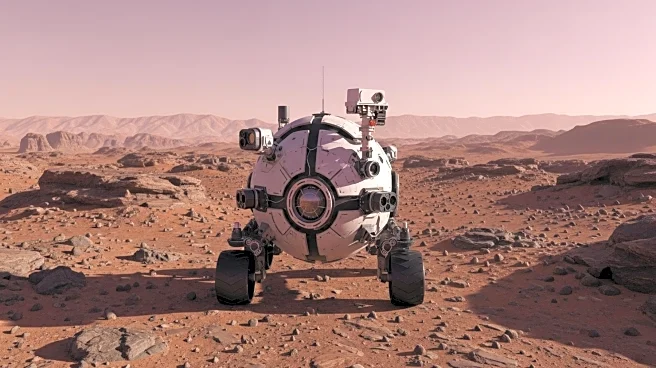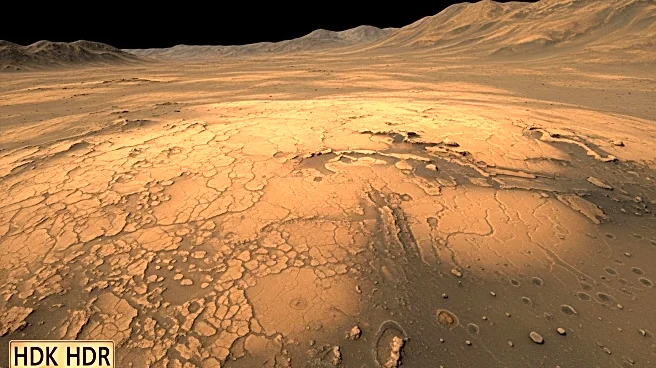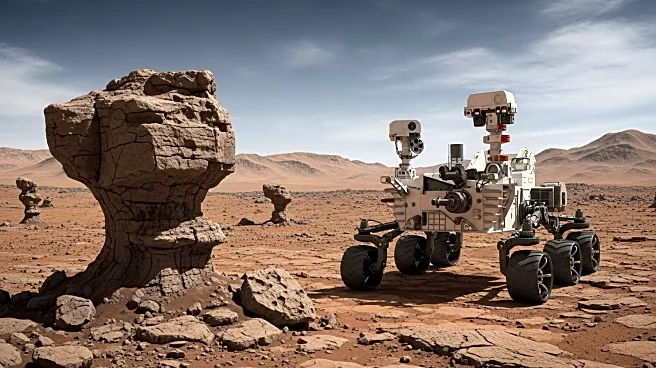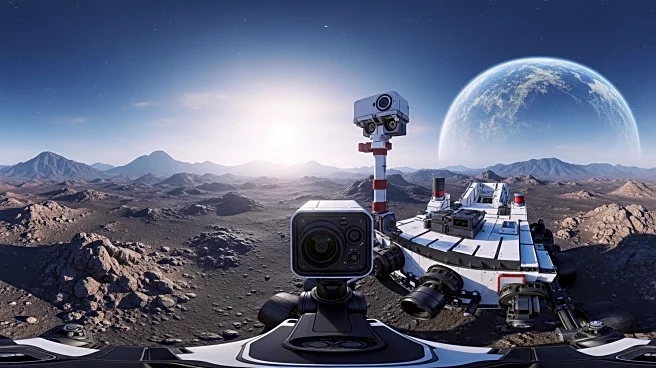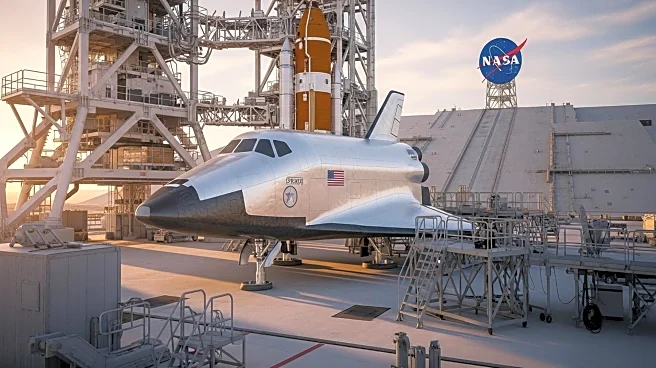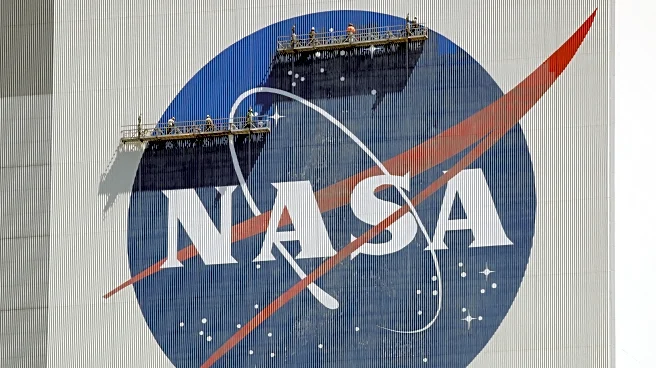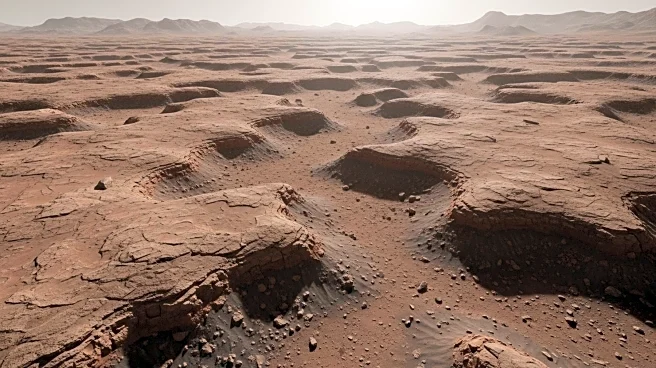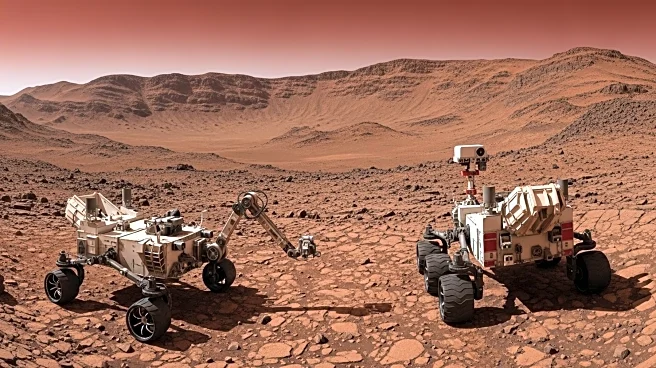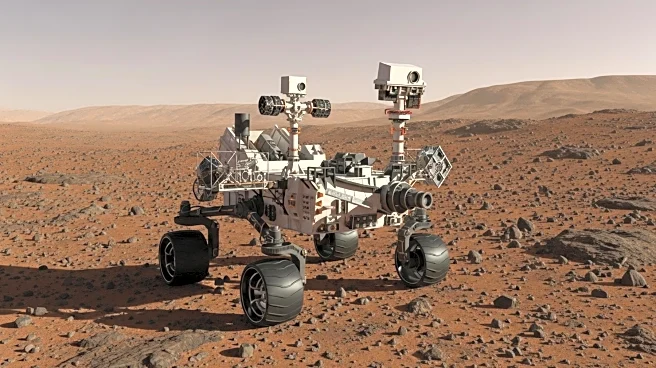What is the story about?
What's Happening?
NASA's Curiosity rover is currently navigating a complex landscape on Mars, characterized by ridges and hollows. The rover, equipped with various scientific instruments, is conducting detailed investigations into the geological features of the area. The mission, led by Susanne P. Schwenzer, Professor of Planetary Mineralogy at The Open University, UK, involves capturing images and analyzing the chemistry of the ridge tops, sides, and rocks within the hollows. The rover's activities are carefully planned to manage power and data budgets, especially as it emerges from the Martian winter. The team is also conducting atmospheric observations during the aphelion cloud season, aiming to capture environmental data alongside geological studies.
Why It's Important?
The exploration of Mars by the Curiosity rover provides critical insights into the planet's geological history and environmental conditions. Understanding the composition and structure of Martian ridges and hollows can reveal information about past water presence and climatic conditions, which are essential for assessing the planet's habitability. The data collected by Curiosity contributes to broader scientific goals, including the search for signs of past life and the preparation for future human exploration. The mission's findings can influence planetary science and guide future Mars missions, impacting research priorities and technological developments in space exploration.
What's Next?
As Curiosity continues its mission, the rover will further explore the Martian terrain, focusing on detailed imaging and chemical analysis of geological features. The team will prioritize investigations based on power availability and scientific objectives, aiming to maximize data collection during favorable conditions. Future plans may include exploring new areas within the Uyuni quadrangle and expanding atmospheric studies. The ongoing mission will continue to provide valuable data for scientists, potentially leading to new discoveries about Mars' geological and environmental history.
Beyond the Headlines
The Curiosity rover's mission highlights the collaborative efforts of international scientists and engineers in advancing space exploration. The use of advanced technology to study Mars' surface reflects the growing capabilities of robotic exploration, paving the way for future missions that may involve human presence. The mission also underscores the importance of interdisciplinary research, combining geology, atmospheric science, and engineering to achieve comprehensive understanding of extraterrestrial environments.
AI Generated Content
Do you find this article useful?
